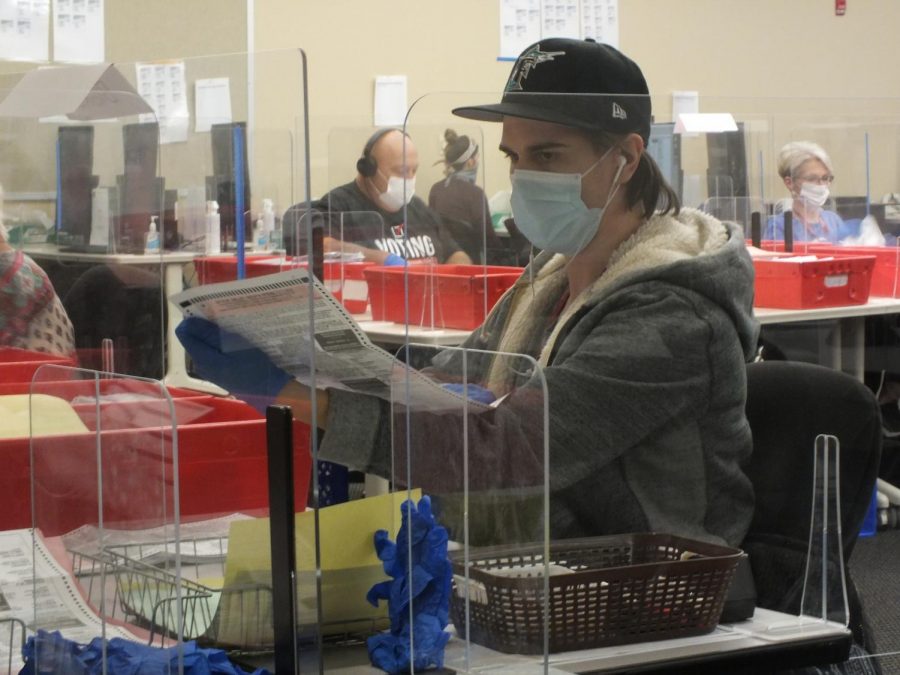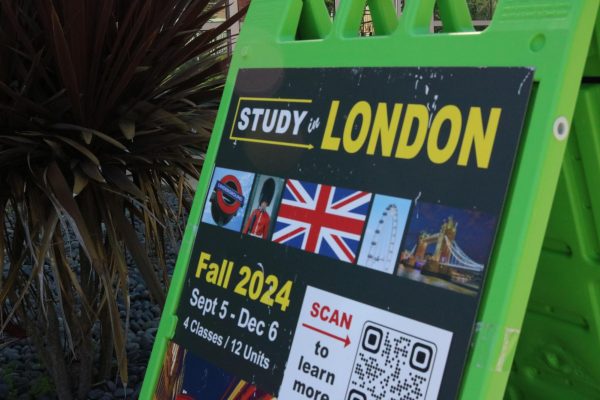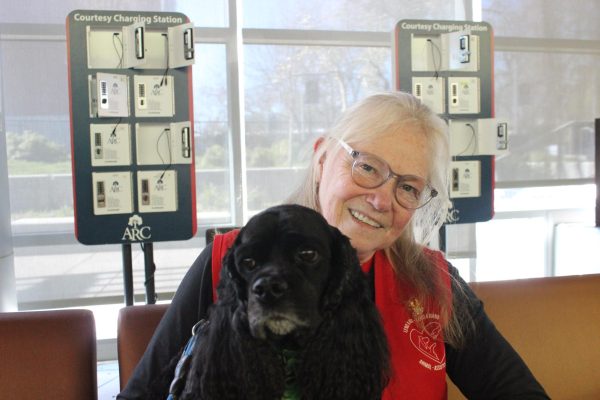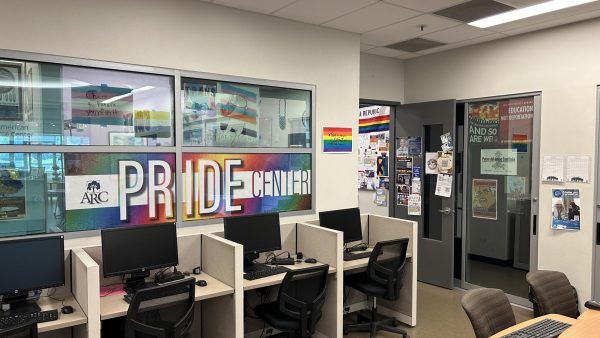Sacramento County tabulates election in record voter turnout year
Ballot tabulation process is arduous, meticulous but assures that democracy prevails
A Sacramento county poll worker helps check and tabulate ballots on Election Day, Tuesday Nov. 3, 2020.Poll workers and voters were required to wear mask to enter the Sacramento County Registers offices. (Photo by Irvis Orozco)
Anxious Americans waited five days after the Nov. 3 elections for the 2020 election results, tabulations were done to finalize key contested results in states like Pennsylvania, Georgia, Nevada and Arizona.
At the center of the attention are the poll workers at county voter registrar offices nationwide who worked long hours to tabulate votes to determine the next president and the next set of political leaders and laws.
Americans nationwide are also questioning why election results took so long to be officially called. This is because each state has a different process of when they can start tabulating and who can see the ballots counted.
There are different regulations on Election Day for postmarked mail-in voting ballots per state. Many Nov. 3 postmarked ballots arrived after the election in different states. There are also overseas military ballots that have to arrive back in military personnel home states. In California, ballots can be counted 17 days after Election Day according to the Sacramento County Registrar’s office.
Americans are likely unaware of the work that goes into meticulously and slowly tabulating each vote and the tedious work of receiving hundreds of thousands, if not millions of ballots collected in urban areas either via mail or in-house voting locations. Poll workers have also had to endure the possibility of COVID-19 exposure. In Sacramento County plexiglass shields were set up as a defensive barrier against exposure and masks were required for all personnel.
On Election Day, Janna Haynes, Sacramento County voter public information officer, said that many efforts were put into place to ensure a safe, transparent ballot-counting process. Because of COVID-19 upsurges, many more voters decided to mail in votes or drop them off at one of the 80 plus locations countywide.
“Before Election Day we had more than 500,000 ballots that had already been returned, which count to 58% of our registered voters,” Haynes said.
By 11 a.m. on Election Day, more than 7,000 in-person voters came into the main Sacramento County Voter Registrar’s office to cast their ballot, or receive a conditional voter ballot if they didn’t get one in the mail or if they were registering to vote that day.
Because of Election Day’s anticipated record voter turnout, an increase in hiring by Sacramento county was planned; more than 1,000 temporary ballot workers were hired, according to Haynes. Such expectations were accurate, as the Election Day voter turnouts broke records in California according to a New York Times article.
The life cycle of the ballot goes through several stages before it’s tabulated, starting with a mail sorting machine and then scanning in and receiving ballots, according to Haynes.
“The mail sorting machine scans the barcode on the envelope that allows you to track your ballot, then it scans your signature to make sure that your signature matches the one that we have on file, and then it puts them down by precinct,” Haynes said.
Haynes explained that if signatures don’t match in the machine, then it goes to a team of ballot workers that look at it and compare it to the signatures that the county has on file for voters. Ballot workers who go through extensive training and education then decide whether or not the signature matches. The majority of them do match, and if not, county officials try and call voters to fix problems.
After this is completed, the ballot goes through another process team that extracts the ballots from envelopes and then they separate them to ensure privacy.
“Your ballot is anonymous, there’s nothing on your actual ballot that connects it to you,” Haynes says.
The next process after this is ballot quality control to make sure there aren’t any cuts, stains or marks that can get caught up on the actual tabulator that may cause the machine to give an incorrect reading, according to Haynes. If there are any issues with ballots, poll workers will then duplicate the ballots. The process requires no less than two people working on ballots to ensure transparency.
“Then the ballots finally go through the tabulator, which actually looks like a reverse printing press where they scan through the tabulator. It then goes into an internal network that is not connected to any kind of external internet… and then it all starts to tally up,” Haynes said.
But as Haynes points out the heart and center of the process are the poll workers, who work long seasonal hours to count votes.
“We have a lot of different places that your ballot goes through, while there’s still a very big machine element there’s a huge human element [to the] tabulating the process,” Haynes said.















